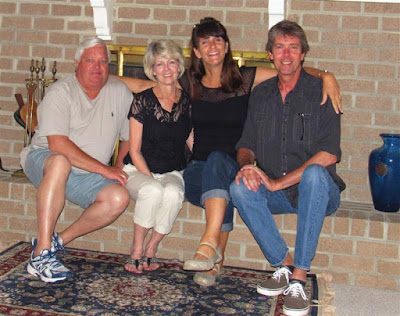Museum Reopening, Sailboats Racing & Dining with Friends...
We began our day at the Gibbes Museum of Art. One writer described the opening as, "With an event this epic, you'd think they might have come up with a better name for it, like the Super Stupendous, Long-Awaited, Better-Than-Ever, Most Illustrious New Museum Opening (and ribbon-cutting)."
In 1790, Charleston was the 4th largest and wealthiest city in America. Like Philadelphia, Boston and New York, what distinguished Charleston then was art. While it was home to some of the country's earliest art, collectors, artists, who made the City both muse and subject, it was also home to slavery and a war that divided our nation. In 1888, when Chareston was financially and culturally on its knees, benefactor James Gibbes left a bequest to the City to build an art museum. When the Gibbes Museum opened in 1905, the nation celebrated what Charleston has always understood: the power of art-to inspire our imagination, heal our hurt, revel in our experience, rebuild what's broken, nourish our souls, and release all that holds us back.
The who's who of Charleston came out to celebrate.
After the ribbon cutting, Steve and I were the first ones to enter.
We enjoyed learning the history and perusing the permanent collections.
When I saw this piece, six years ago, it took my breath away. This viewing had the same impact. Wow. The exquisite beauty of the Veiled Lady (1856) is heightened by the fact that so little is known about it or the talented artist, Pietro Rossi, who created her. The Veiled Lady illustrates a theme which was very popular in the second half of the nineteenth century: the illusion of the diaphanous drapery. Since it was given to the museum in 1910, it has become one of most beloved and well-known pieces in the collection.
I love minatures. The first-ever American miniatures were painted in Charleston and today the Gibbes is home to one of the most prestigious American portrait miniature collections in the country. Comprised of over 600 works the collection spans from early colonial examples of the 18th century to Revival Period miniatures made in the late 19th and early 20th centuries. Most small enough to fit in the palm of the hand, portrait miniatures are unique works of art painted in watercolor on thin disks of ivory. Highly personal objects, these tiny paintings were often made to commemorate births, engagements, marriages, and even deaths, offering unique insight into the private lives of American individuals and families before the advent of photography.
The museum is hosting temporary exhibits. This piece is part of The Things We Carry: Contemporary Art in the South. Stacy Lynn Waddell's Manifest, is a series of panels that have been burned, branded and singed, in which the cargo refers not only to tangible objects, but also to the ideas and cultural heritage of passengers. The singed faces, objects, and letters that emerged are an investigation of the inner conflict experienced in negotiating African American cultural history and heritage with personal identity. The piece represents all that was transported across the Atlantic in the slave trade, not just cargo, but also the ideas and cultural heritage carried by passengers.
The Porgy and Bess exhibit was very comprehensive and even included a self-portrait by George Gershwin.
A new exhibit, upon reopening, showcases Mary Jackson, a nationally recognized practitioner of sweetgrass basketry. Born in Charleston, Jackson learned Lowcountry sweetgrass basketry techniques at an early age and considers this traditional art form a symbol of her heritage. Her work is in numerous private and public collections including the National Museum of American History at the Smithsonian Institution.
She offered us a glimpse into her talents by demonstrating the technique of melding sweetgrass, bulrush, and pine needles into a magnificent work of art. Wow.
I found this to be pretty dang cool. Sonya Clark brought to the Gibbes an interactive installation of Pluck and Grow, a collaborative work between the artist and Museum visitors. Clark uses hair as metaphor for what connects us as humans, separates us into racial groups, and makes us individuals.
The artist invited us to write our "hair stories" on a piece of paper—whether that be a poem, a story, or a drawing. The paper will be dyed in varying shades of black, brown, and blonde to give the appearance of human hair and Clark will twist and insert them into "follicles" drilled into a surface. Once on display, visitors may pluck a strand, read the story, and replace it with their own hair story on a slip of white paper. As these new stories replace the original ones, the piece will take on the appearance of aging—as real human hair would. Definitely unique art that intrigued me so much.
"In the presence of art, we have the opportunity to see inside someone's heart, mind, and soul and feel what they felt. That understanding and compassion make us more understanding, compassionate people, who in turn, create a more compassionate, understanding world. That is art's gift."
After viewing inside art we ventured out into the storm and headed to the harbor to see the art of Sailing as the Atlantic Cup racers began their 645 nautical mile journey to Brooklyn, NY.
These boats are truly works of art as they glide through the rough seas.
Our exceptional Charleston day concluded with an exceptional dining experience at Michael and Sharon's. How cozy it was to be in the company of such comfortable friends.
“Men do not quit playing because they grow old;
they grow old because they quit playing.”
― Oliver Wendell Holmes Sr.



















0 comments:
Post a Comment